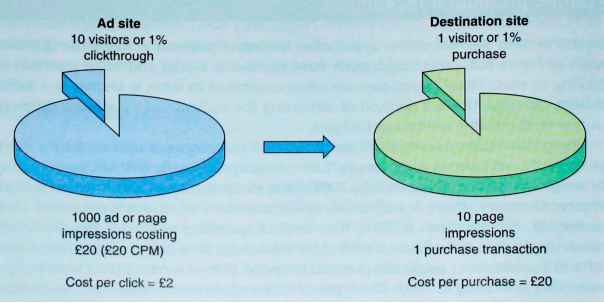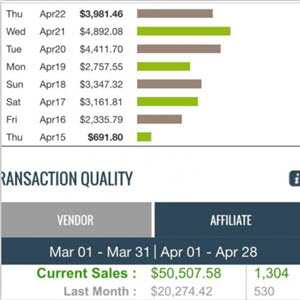Infrastructure
Infrastructure comprise of companies that run services to measure and audit campaigns, targeting and personalization companies, ad management software developers and providers of technological infrastructure (ibid).
Chaffey describes the simplest model of online advertising on figure 1. In the example, Ad site displays thousand times an ad, on which 10 visitors click (hence 1% clickthrough). Those visitors are taken to the Destination site, where 1 of them actually purchases the advertised goods. In this case, spending of £20 on displaying the ad resulted in one sale, thus the advertising cost per purchase was £20 (Chaffey, 2003:332). Detailed information about online campaigns efficiency and its calculation is described later in this paper.

- Figure 1 - Basic model of online advertising (Adapted from Chaffey, 2003:332)
As Zeff points out, first web ads on the Internet copied the world offline. A part of a website was assigned to advertisements, which usually had rectangular format and did not take more than about 10% of page space (Zeff, 1999:1). Later on, website visitors got used to the standard banners and it was necessary to employ new types of online advertising, so that the Internet users would be attracted (Benway & Lane, 1998).
Hoffman and Novak note that with the growing share of advertising expenditures allocated in the online advertising, companies started to examine, how many visitors, attracted by the ads on other websites, are finally turned into customers. After counting all costs, the sum needed to acquire one customer was in many cases even higher than his or her average lifetime value. As this situation was not sustainable in the long-run, it was necessary to adopt more efficient forms of customer acquisition. Based on this needs, the concept of affiliate marketing arose (Hoffman & Novak, 2000).
Was this article helpful?

